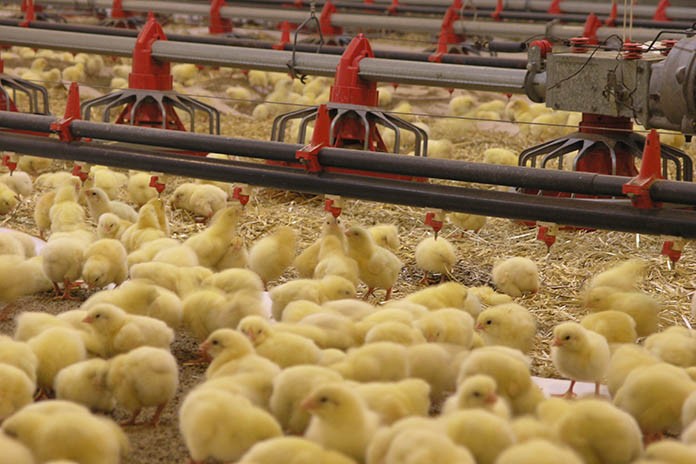
With commercial broilers spending up to 30% of their lifespan in the egg, incubation temperature has been linked to some leg weakness issues.
The recommended incubation temperature (RIT) for good chick quality at hatch is 37.80°C. Both higher and lower incubation temperatures have been implicated with reduced leg strength. Interestingly, incubation of a broiler parent line at temperatures below 37.80°C resulted in higher femoral bone ash (BA) at hatch and at 6 weeks of age, an ability to stand for longer in a latency-to-lie test compared to birds incubated at RIT. This experiment was designed to assess the impact of lower than recommended incubation temperatures on hatch time and bone ash in commercial broilers.
Fertile eggs were identified with a unique number, and incubated at either 37.8°C (RIT) egg shell temperature (EST), or with a gradual increase from 37.4°C at the start of incubation (sett) to 37.80C (Test Temp). Hatch was observed at 492hrs (identified as Early hatch (E)) and again at 516 hrs (identified as Late hatch (L)) of incubation. Chicks were taken out of the incubator (take-off) either early (E=492hrs) or late (L=516 hrs). A subset of both the early and late hatched chicks were taken-off and sampled at 492 and 516 hrs respectively. These treatments were identified as EE i.e. early hatch early take-off, and LL i.e. late hatch late take off, respectively. Of the early hatched chicks, two other treatment groups were created at 492hrs. One group was immediately taken-off, given access to feed and water for 24 hrs (identified as Early Fed), and then sampled at 516 hrs. The other group of early hatched chicks remained in the incubator for a further 24 hrs (Early hatch Late take-off – (EL)), until 516hrs, when they were sampled. At sampling chick weight, chick length and bone ash (BA) were measured.
Incubation under Test Temp resulted in a greater number of chicks hatching late compared to incubation under RIT conditions. Early hatch early take-off (EE) and late hatch late take-off (LL) chicks had similar mean bodyweight at take-off. In comparison, EL chicks were significantly lighter and Early Fed chicks were heavier at 516 hrs. EE and LL chicks were of similar length, which were both significantly shorter than EL and Early Fed chicks. EE and EL chicks had significantly lower BA than LL and also Early Fed chicks.
EST can influence hatch time. Lower EST during the early stages of incubation appears to delay hatch. Late hatched chicks had higher BA than early hatched chicks. However, the provision of feed to early hatch chicks significantly increased their BA. Further investigation into the role of yolk and feed derived Ca and P during the early post- hatch period, on BA and leg strength throughout the broiler grow out is required. The influence of time spent by the chick in the incubator hatcher tray before take-off, on BA, also deserves consideration.
From the APSS proceedings.

















